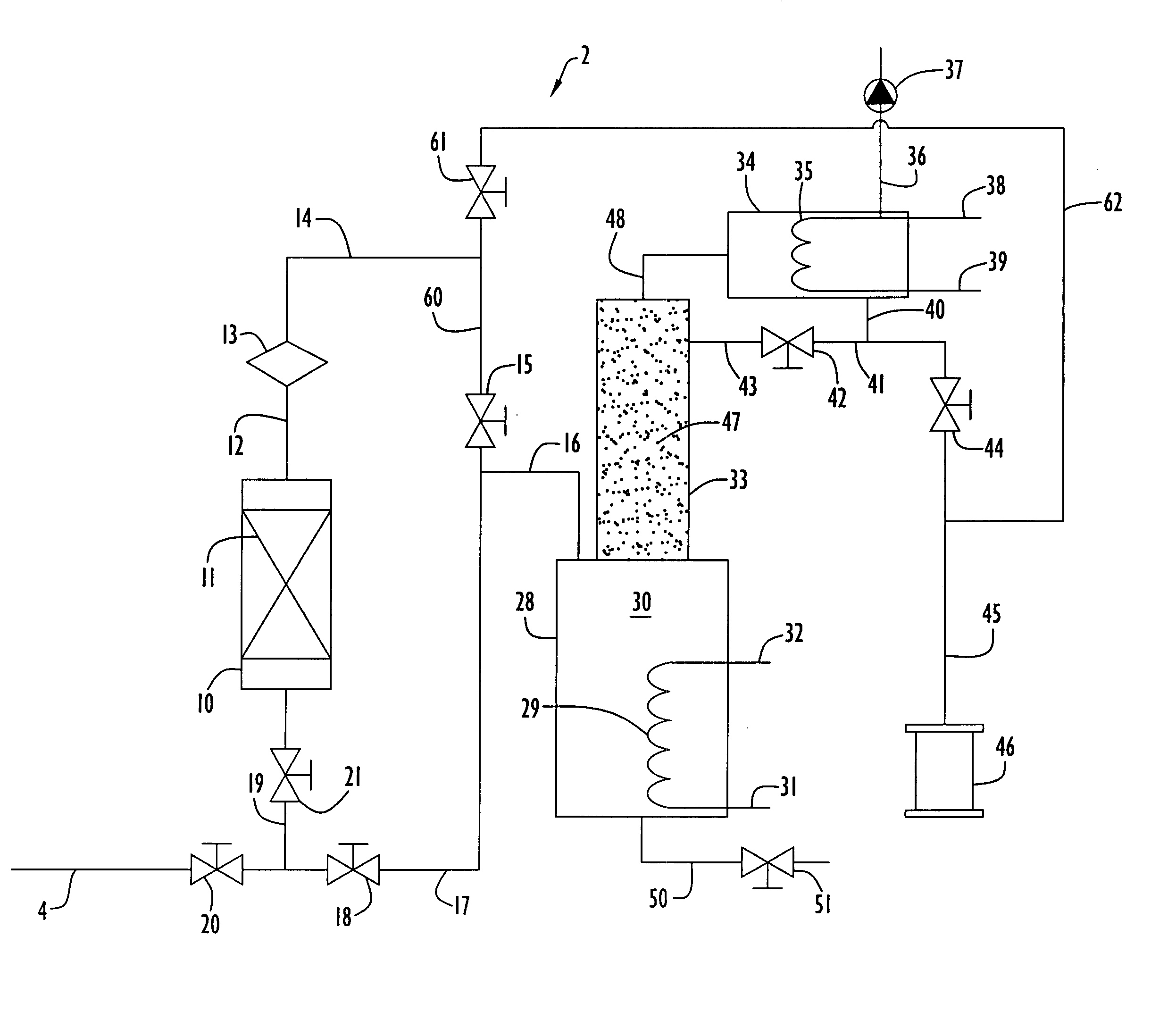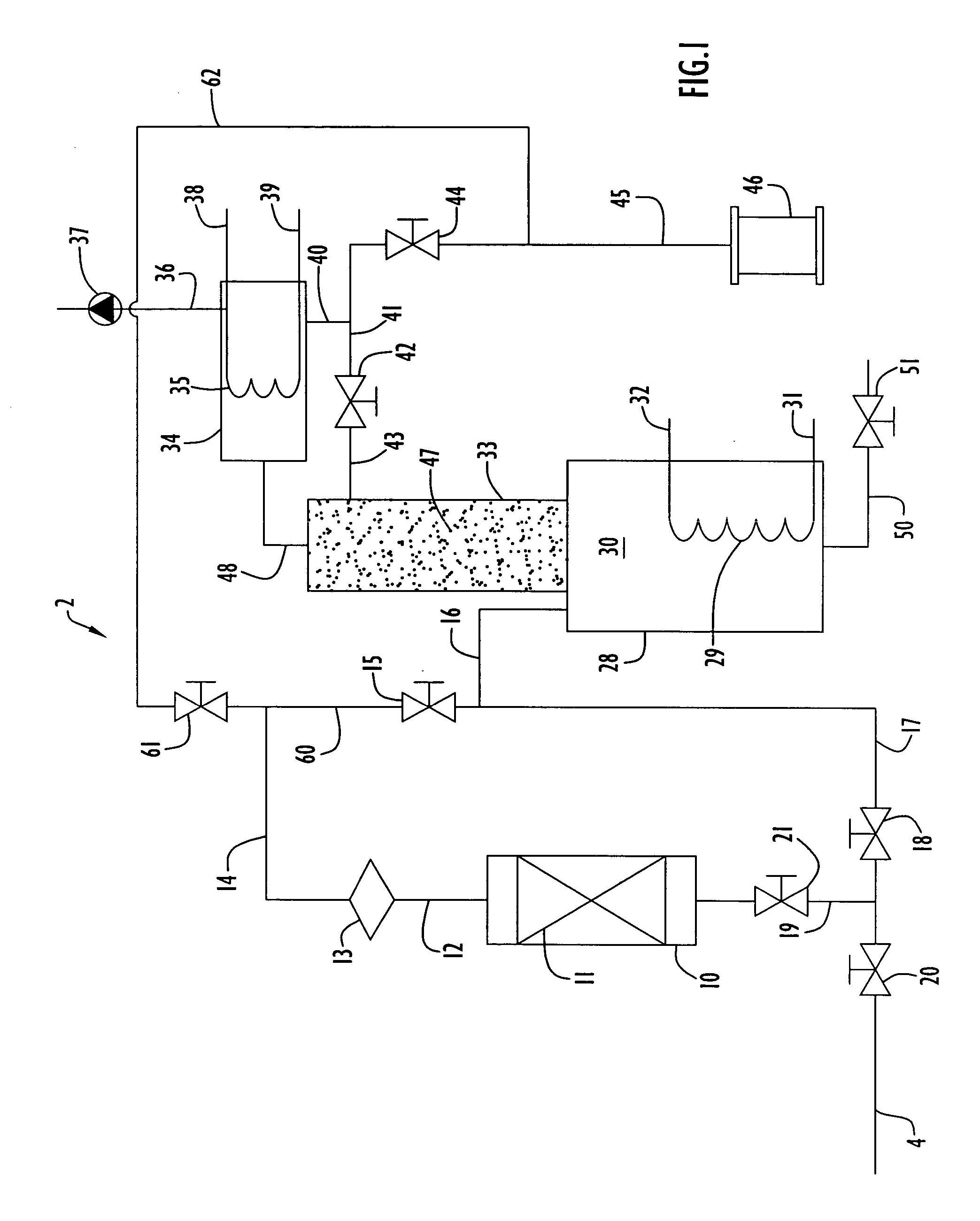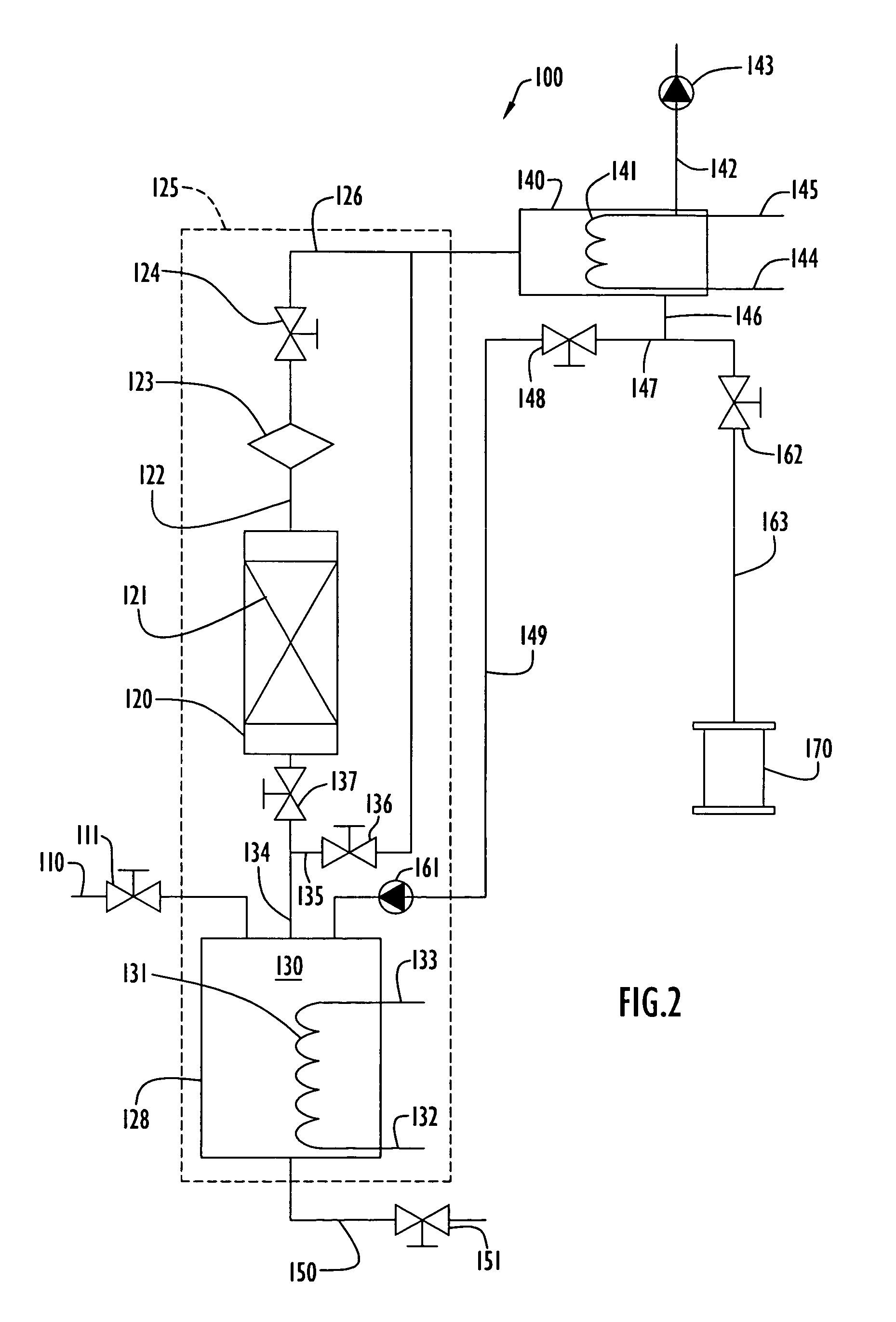Purification of silicon-containing materials
a technology of silicon-containing materials and purification methods, applied in the direction of silicon compounds, halogenated silanes, chemistry apparatus and processes, etc., can solve the problems of increasing the dielectric constant value of the deposited film, metal and organic impurities are fatal to the thin film, and the general acceptance of semiconductor processing applications
- Summary
- Abstract
- Description
- Claims
- Application Information
AI Technical Summary
Benefits of technology
Problems solved by technology
Method used
Image
Examples
example 1
[0070] An adsorption unit was assembled utilizing a column of 2.54 centimeter (1 inch) inner diameter and 36.8 centimeters (14.5 inches) in length was packed with about 80 grams of Ambersorb® 563 adsorbent material for removing organic impurities from tetramethyl silane. Liquid tetramethyl silane flowed as influent upward through the column at a flow rate of about 20 milliliters / minute. The concentrations of tetrahydrofuran and toluene in the influent tetramethyl silane were spiked to 24,000 ppm (weight) and 4,570 ppm (weight), respectively. The adsorption unit was operated at ambient conditions of 24° C. and 270 kPa.
[0071] The concentrations of the tetrahydrofuran and toluene were measured periodically in the effluent stream from the adsorption unit utilizing a Varian model CP-3800 gas chromatograph having a detection limit of 150 ppb. The adsorption unit removed these impurities to sufficient levels that were below the detection limit of the gas chromatograph, indicating that the...
example 2
[0073] The adsorption unit of the previous example was regenerated after its saturation by heating the unit to a temperature about 200° C. while purging the unit with nitrogen gas at a flow rate of 3 liters / minute for a period of six hours. After this purging process, the material stream spiked with impurities as described in the previous example was flowed through the unit, and the unit was determined to be fully regenerated and performed in the same manner as described in the previous example prior to saturation of the adsorbent material.
example 3
[0074] The process as described in Example 1 was performed in the same manner as the present example, with the exception that the adsorption unit was packed with activated carbon grains instead of Ambersorb®563 adsorbent material and the concentrations of tetrahydrofuran and toluene in the influent tetramethyl silane were spiked to 5,048 ppm (weight) and 4 ppm (weight) respectively. The influent stream was directed through the column as the same flow rate as described in Example 1, and impurity levels of toluene and tetrahydrofuran in the effluent were not detected for a period of 30 minutes. At the point in time when the gas chromatograph began detecting impurity concentrations, the process was halted and the amount of impurities within the adsorbent material was measured. It was determined that at least 2.8 grams of tetrahydrofuran and at least 2.06 milligrams of toluene were adsorbed in the activated carbon grains and were thus removed from the tetramethyl silane during the proce...
PUM
| Property | Measurement | Unit |
|---|---|---|
| dielectric constant | aaaaa | aaaaa |
| dielectric constant | aaaaa | aaaaa |
| temperature | aaaaa | aaaaa |
Abstract
Description
Claims
Application Information
 Login to View More
Login to View More - R&D
- Intellectual Property
- Life Sciences
- Materials
- Tech Scout
- Unparalleled Data Quality
- Higher Quality Content
- 60% Fewer Hallucinations
Browse by: Latest US Patents, China's latest patents, Technical Efficacy Thesaurus, Application Domain, Technology Topic, Popular Technical Reports.
© 2025 PatSnap. All rights reserved.Legal|Privacy policy|Modern Slavery Act Transparency Statement|Sitemap|About US| Contact US: help@patsnap.com



